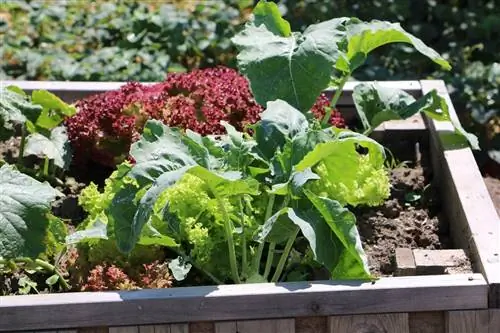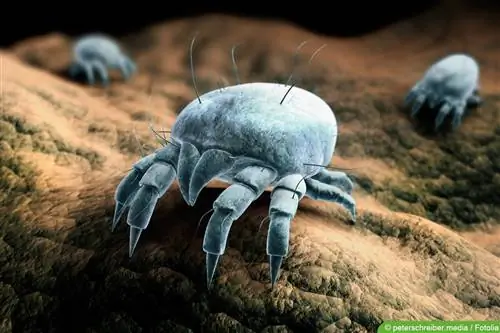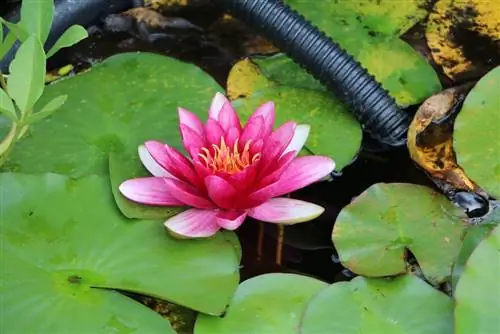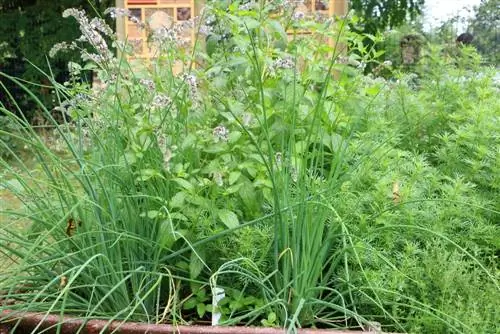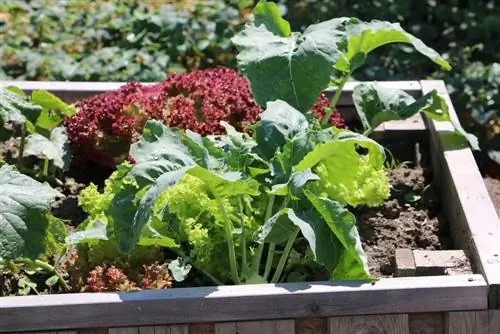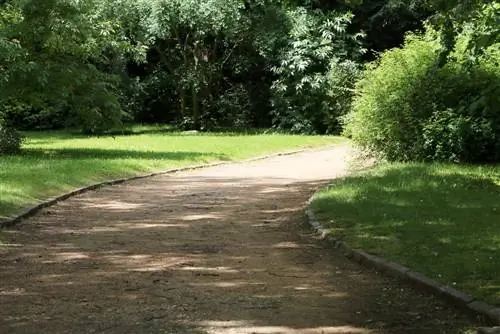- Author admin [email protected].
- Public 2023-12-17 03:39.
- Last modified 2025-01-24 12:45.
Anyone who owns a garden knows that they can express themselves creatively here. There are also many ways to create a bed border. Before thinking about the materials used, it is important to consider what the bed that has a border will be used for. The question arises as to whether the garden should be designed largely in a natural and natural way or in a modern way.
Previews
- are there already other bed borders
- should these be added or changed
- the bed should be the focus
- should move a vegetable patch into the background
- what does the overall style look like in the garden
Note:
Bed borders are particularly suitable for keeping things tidy in the garden. This creates clear boundaries and, depending on the situation, you can create high-quality impressions through the material used.
Oak trunks
A very natural and easy-to-lay edging is one made from oak trunks. These are often available in hardware stores as finished elements. In these palisades, round timbers or half-round oak timbers are attached to each other with wire or strips.
Please note the following:
- flexible element attached with wire
- can also be placed in round borders
- Simply hit the bed border into the ground with a wooden hammer
- attached with strip for straight edging
Tip:
These palisades are not only available from sturdy oak trunks, but also many other types of wood. These include weather-resistant species such as larch, Douglas fir or robinia.
Braided Fences
Very natural and very popular in many cottage gardens are fence borders made from hazelnut branches or willow. These two types of shrubs are ideal for weaving because the shoots are long and flexible.
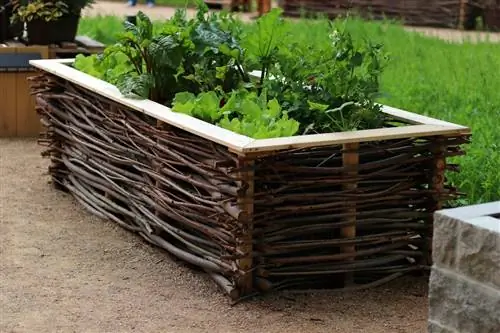
The following should be noted:
- Fences are already available in stores
- only last for a limited time
- must be replaced after two to three years
- Wood weathers quickly
- Wave fences made from locust trees are more robust
Tip:
If you like it playful, then the small mini fences from the market that are made of cast iron are also available. These also fit well into a natural, romantic garden and, above all, last longer.
Corten steel
Bed edging made of Corten steel has become increasingly popular recently. This is not only popular in the garden, the steel is also discreetly used at the edges of the house itself.
This is the following material:
- Compound of different metals
- weather-resistant without corrosion coating
- natural rust is desired
- protects the steel interior
- Bought new, the steel is gray
- rust sets in over time
- visually very modern
Stainless steel or aluminum
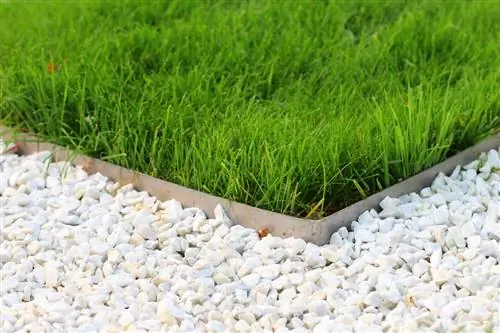
If you opt for modern design, you can find universal edging systems made of stainless steel or aluminum in specialist retailers. These can be easily installed yourself and offer a modern look, for example in a Japanese garden:
- Profiles are often wavy lengthwise
- can also be used later
- Profiles available in different heights
- Dig a trench around the bed
- Remove root suckers and stones
- Align profiles with the attached fixing rods
- Drive into the ground with a hammer
- Remove the fixation rods
- Fill the trench with soil
Curbs
If a bed border is to be made from curbs, there are various options. Stones also underline a natural ambience in the garden and also have the advantage of lasting a long time. They offer a decorative eye-catcher, especially along paths or a terrace.
The following stones can be used as curbs to match the rest of the garden:
- Bricks
- used straight or at an angle
- small concrete blocks
- are often also offered with a pattern
- Fieldstones
- available in different colors
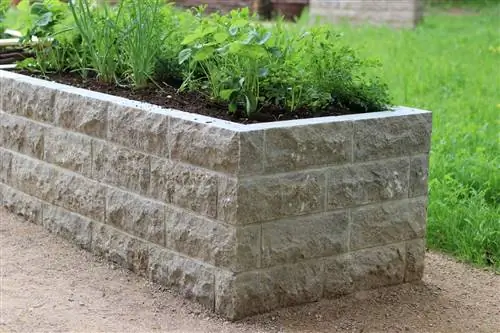
Note:
Fieldstones are commercially available. However, if you live on the outskirts of the city or often go for walks through the fields, then look for suitable stones here.
Squared timber in railway sleeper format
Even though it was very popular in the 80s of the last century to buy used railway sleepers and use them as borders in the garden, this is forbidden today. The thresholds may neither be sold to private individuals nor used in one's own garden because they have been treated with tar oils, which are highly toxic and sometimes carcinogenic. That's why the old railway sleepers now belong in the hazardous waste category. However, squared timber made of oak in railway sleeper format is available commercially. Unfortunately, these parts are also significantly more expensive than the real thresholds.
Tip:
If your garden is predominantly shady and it is more humid than dry even in summer, then a bed border made of weather-resistant materials made of stone, granite, concrete or metal is always preferable. Natural materials are generally not so suitable here.
Bed border made of plants
Bed borders made from plants are completely natural. These borders are particularly popular in a farmhouse or natural garden. Here, too, you should not miss out on staking out the bed in advance so that it doesn't look untidy.
The following plants are often used here:
- small, hardy perennials such as lady's mantle
- Subshrubs like lavender
- Fat hen as one of the Sedum species
Important:
When using plants as bed boundaries, it is important that they do not form runners and are also easy to cut. They give the bed a good structure and are also very decorative at the same time.
Boxwood border
In earlier years it was also very popular to use boxwood as a small hedge around a bed in a modern or natural garden. However, since the box tree borer has been on the rise in recent years, this is now not recommended. Because once infected, the plant no longer has a chance. There is also currently neither a good way to combat it nor to prevent it. A bed border made of boxwood can be destroyed by pests within a short time.
However, there areAlternatives:
- Box-leaved barberry (Berberis buxifolia)
- True lavender (Lavandula angustifolia)
- Tree of Life (Thuja)
- Purple willow (Salix purpurea)
- Rhododendron Blommbux (Dwarf Rhododendron)
- Dwarf ligustrum (Ligustrum vulgare)
Note:
All of the shrubs presented here are small, tolerate pruning and can be created as a small hedge to replace the boxwood as a border for a bed.
Plastic
Something different, very modern and currently available in many specialist shops is a plastic bed border. Because this offers many advantages. Above all, the low price is often a decisive factor in the decision to use plastic. In addition, the plastic borders are available in many colors and shapes. Depending on the height, they are intentionally visible or invisible, almost sunk into the ground.
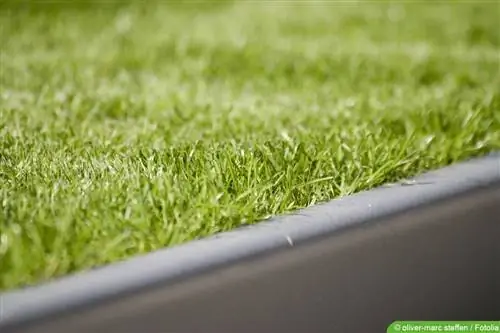
This offers the followingAdvantages:
- various models available
- also wood or stone look
- cheaper than stone or wood
- also suitable for beds with runner plants
- can serve as a root barrier
- easy installed
One disadvantage, however, is that if the bed border is damaged, small plastic parts can get stuck in the soil, which could lead to environmental damage.
Note:
Even if the plastic edgings are presented as very weather-resistant, they can be destroyed more quickly by too much sunlight. Therefore, these bed boundaries are not forever. Sharp garden tools can also quickly damage the borders if you work carelessly.
Raised bed
A raised bed is different than a normal bed enclosure. In addition to the visually attractive appearance, this also offers the advantage that the bed can be worked on while standing and not bending over.
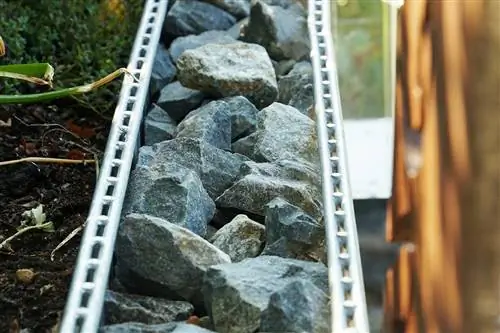
A raised bed can have many different bed enclosures:
- Wood border
- Gabions with granite stones
- Metal border
- cast from concrete
- coated with plastic in stone look
- various, suitable plants
Tip:
Raised beds fit into many different types of gardens and can be easily adapted to the design of the rest of the garden thanks to their borders. These beds also loosen up the garden as a whole. However, you shouldn't put too many of them next to each other, otherwise the look of the garden will become boring.

